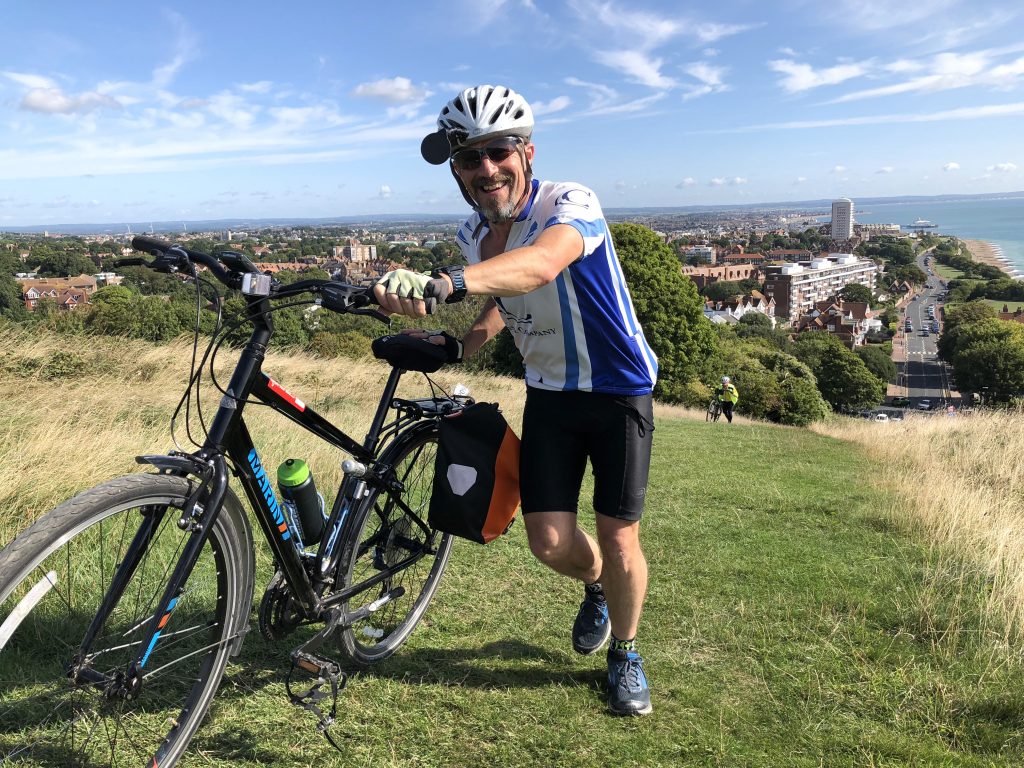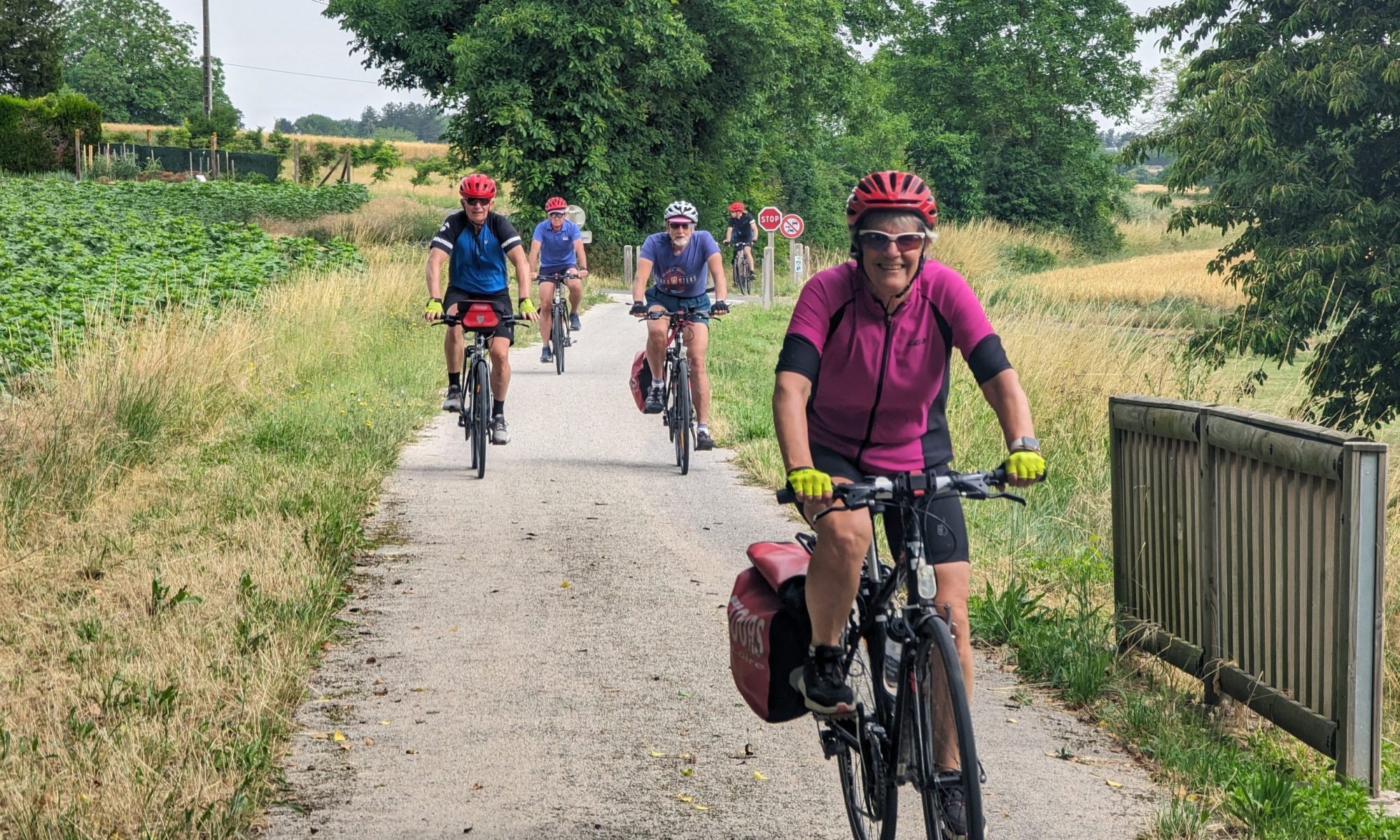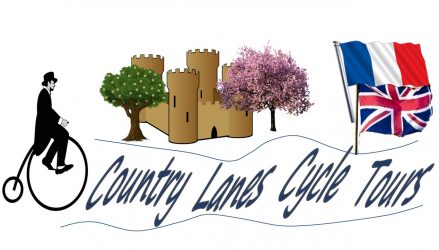Level of Difficulty, Conditioning, Traffic, and Safety, and Riding in Rain
Please Read Entire Page before signing up!

The Garden of England tour is fun for both novice and experienced riders. Each day there are a few fairly sizable hills which will likely be challenging for newer riders, and days 6 and 8 will be challenging for even experienced cyclists. In addition, the hybrid bikes we use are heavier than a typical road bike, and we do some hills off-road. These factors provide a difficult workout even for well-conditioned riders.
If you are not comfortable with or enjoy challenging hills, I highly recommend you use an electric-assist bike to enable you to fully enjoy your vacation for the Garden of England tour. You wouldn’t believe the smile on e-bikers as they pass the others going up hills. If you are using an electric-bike, it is not as difficult to get ready for the tours. I would recommend building up with a minimum of 6 rides over 6 weeks, with your last ride at least 20 miles on a regular bike or 25 on an e-bike. Even if you are in great non-cycling shape, this will serve to toughen up your butt a bit (an external padded-seat cover, available online, can also help). Importantly, for the safety of everyone on the tour as well as yourself, you must be comfortable handling a bike in all conditions, know how to ride through occasional gravel, and how to ride safely downhill.
For participants who want to use a non-electric hybrid bike, substantial conditioning is absolutely necessary to enjoy the tour. Speed is not important, but hill-work and endurance are. You will need to be able to ride 40 miles comfortably, and up 500-600 foot hill climbs with steep pitches. However, the mileage is not overwhelming and there is no rush – we have all day. We do ride slowly with a lot of breaks, and this has enabled our newer hybrid riders to be able to successfully finish the ride and enjoy it. My recommendation for the hills is just to get into a very low gear, go really slooww…, and you’ll be at the top before you know it (or just walk!). If you are relatively new to riding, I recommend you build up over a period of at least 3 or 4 months, riding at least once or twice a week on hilly courses, with your last ride at least 35 miles. This will get your legs and bottom in shape.
The Chateau of the Loire River, France tour is significantly easier, but some level of conditioning and preparation is still crucial for enjoyment of the tour. There are only a few major hills, mainly on day 6, and there are some short steep inclines on day 5. Our long day is 37 miles, so you should be able to do that distance comfortably. Hybrid cyclists will require a training period of two months, with the last ride of 30 miles and at least a few hills. E-bikers need a minimum of 6 rides over 6 weeks, with your last ride at least 20 miles on a regular bike or 25 on an e-bike. The Valley of the Kings, France, is easier than Chateau of the Loire, with each day less than 30 miles and only a few hills, but the same preparation schedule is necessary for both hybrid and e-bike riders to ensure a comfortable and safe tour.
Traffic
You should be aware that approximately 15-20% of the England tour and 5% of the France tours are on roads with some amount of traffic. I have studied and adopted the routes exhaustively to find every conceivable way around the traffic, but as we are doing the tours continuously, through city and country, sometimes it is unavoidable. I believe our route enables a much more rewarding experience rather than one in which you are shuttled around from spot to spot. These locations have so much variety, are so beautiful, and are so much fun it’s worth sharing the road a bit! It is therefore incumbent on participants, whether they ride a regular or electric bike, to acquire enough experience in light traffic to feel comfortable. The statistics do show that cycling in Europe is twice as safe as in the US (https://www.bikecitizens.net/presumed-liability-shrinks-cycling-levels).
Safety
Every participant must currently be a competent cyclist. This means you must be able to handle a bike safely, including bumpy, steep downhill descents, sometimes with gravel at the bottom. They also must be able to handle a bike while riding slowly around gates and bollards frequently on bike paths, and must be able to ride with other cyclists safely.
Regarding riding with car traffic, the key for safe riding is to be predictable, visible, and assertive:
Predictable: Ride a straight line.
Visible: Ride with a detachable blinky red light and with another cyclist, if possible.
Assertive: On a busy, narrow road, sometimes it is necessary to take the lane, i.e., ride several feet away from the edge, forcing a car to use the other lane to pass. This is also the case when you are turning off of a busy road – it is less safe to pull over to the side on a busy, narrow road before turning than to take the lane, signal your turn clearly, and then make the turn. Cars will respect that you are acting like a vehicle, and will wait for you to make the turn, just like they would for another car.
A related issue in England, of course, is riding on the left side of the road. You will find that you get used to this much, much quicker than you expected to. The only confusion is at intersections – you will look left first, then right, then go. I just go overboard looking right, left, right, left, and so on until I feel comfortable crossing. Also, many of our country lanes are only one lane. As long as you stay to the left, there is almost always room for the rare on-coming or passing car, which are generally going no more than 20 mph, or if there’s not, periodic pull-outs are along the roadside.
Riding in the Rain
It’s possible we’ll be caught in the rain at some point. I have never been caught in a thunderstorm, though, and the rain is usually fairly light and only lasts at most 45 minutes to an hour. If you bring the right gear, you can stay fairly dry and comfortable and still have a super ride. Also, each day that there’s any chance of rain at all I bring extra shorts & socks in a plastic bag to change into after the rain stops. I recommend you bring the following rain gear:
- Breathable rain jacket with a hood. The temperatures on our tours are low enough so that you can actually wear a rain jacket and not broil (unlike Alabama!).
- Cap with a brim to keep the rain out of your eyes. A traditional bike cap works the best as the brim is short enough to still see the road.
- Showercap to put over your helmet.
- Something for your feet. I haven’t found the best solution for this, but some people try newspaper plastic bags inside your shoes, and there are plastic bags specifically for this sold on Amazon. Another option are rain gaiters, although these are somewhat hard to find and are expensive and bulky. As long as you bring a pair of dry socks to change into after the rain stops, this isn’t too much of a problem.

